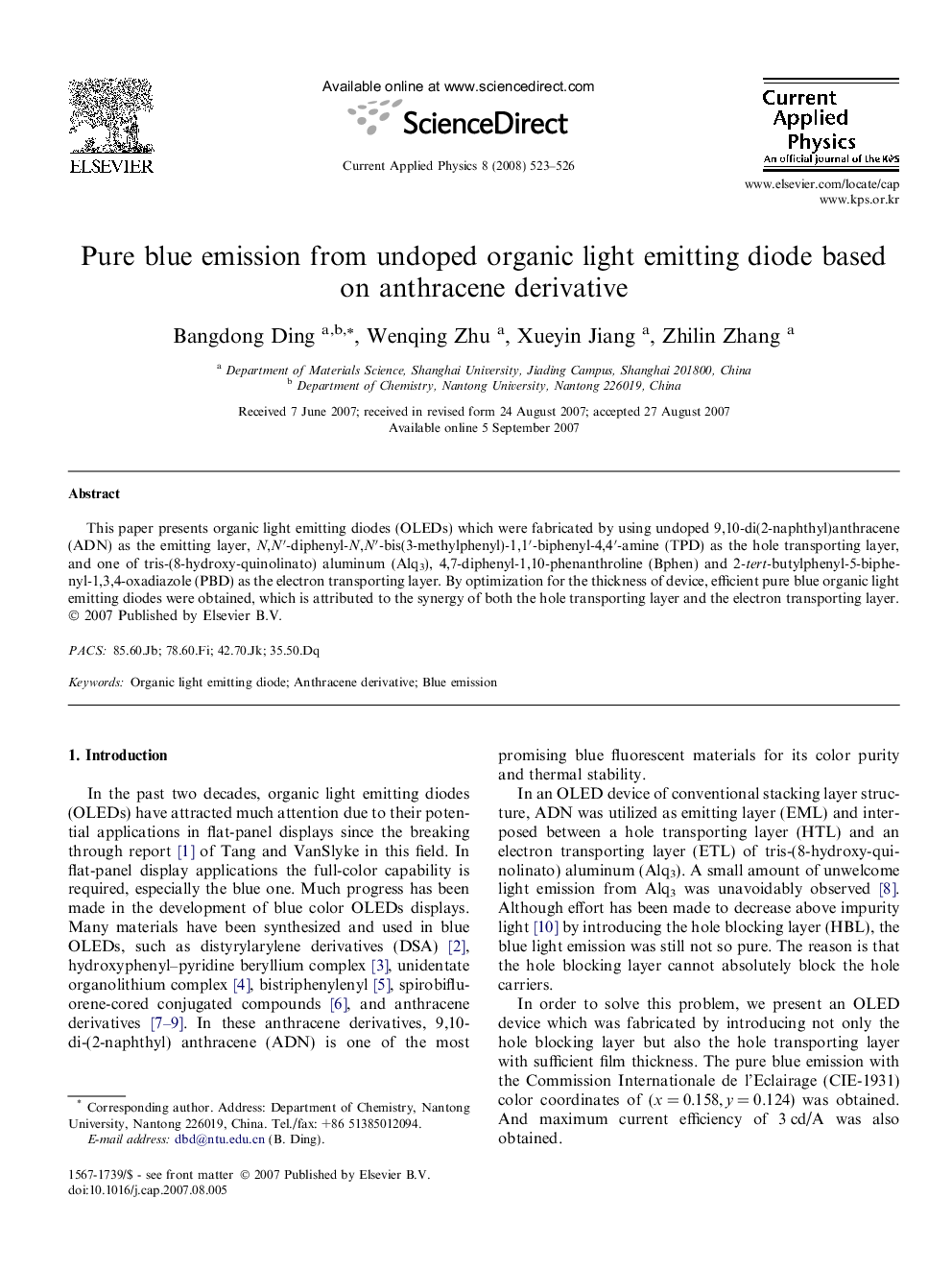| Article ID | Journal | Published Year | Pages | File Type |
|---|---|---|---|---|
| 1789013 | Current Applied Physics | 2008 | 4 Pages |
Abstract
This paper presents organic light emitting diodes (OLEDs) which were fabricated by using undoped 9,10-di(2-naphthyl)anthracene (ADN) as the emitting layer, N,N′-diphenyl-N,N′-bis(3-methylphenyl)-1,1′-biphenyl-4,4′-amine (TPD) as the hole transporting layer, and one of tris-(8-hydroxy-quinolinato) aluminum (Alq3), 4,7-diphenyl-1,10-phenanthroline (Bphen) and 2-tert-butylphenyl-5-biphenyl-1,3,4-oxadiazole (PBD) as the electron transporting layer. By optimization for the thickness of device, efficient pure blue organic light emitting diodes were obtained, which is attributed to the synergy of both the hole transporting layer and the electron transporting layer.
Related Topics
Physical Sciences and Engineering
Physics and Astronomy
Condensed Matter Physics
Authors
Bangdong Ding, Wenqing Zhu, Xueyin Jiang, Zhilin Zhang,
